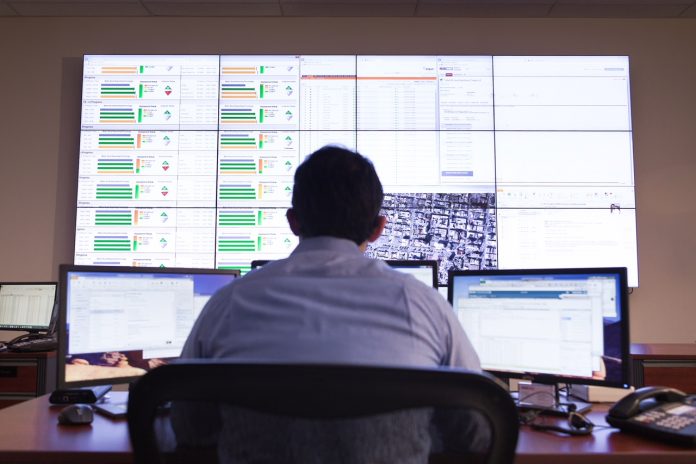IoT, or “Internet of Things,” incorporates sensor-based data gathering (i.e. smart devices) with next-generation wireless networking for remote monitoring and management of water networks. The efficiency gains allow utilities to tackle problems facing the industry today, such as changing workforce, a deteriorated infrastructure and limited budgets.
“Smart utilities” manage their assets using automated devices that enable the collection and analysis of data on usage, flow rates, water quality, pressure, leakage and more. This enables them to take intelligent action that can reduce costs and deliver the best service to their customers.
Here are some of the latest smart water technologies in automatic meter infrastructure (AMI), remote shutoff, leak detection and automated flushing from Mueller Water Products.
Mi.Net® System Helps Utilities Become Smarter
The Mi.Net system links service connections, distribution sensors and control devices, in a technology ecosystem for real-time access and control. Designed to LoRa open architecture standards that enables data to travel faster and further, the Mi.Net platform gathers hourly usage data from every meter in the network. The unique differentiator of Mi.Net is its ability to enable smart city infrastructure which allows utilities to install any IoT device regardless of manufacturer or equipment type.
Data from equipment installed throughout the distribution system communicates across Mi.Net to alert utilities of leaks, bursts or other emergent conditions, allowing them to efficiently allocate resources.
Remote Meter Connect/Disconnect Technology Delivers Operational Savings
The 420 RDM contains a remote disconnect valve, which is integral to the 5/8-inch residential meter. Utilities can use this feature to directly manage their water services from the utility office. The unique quality of the 420 RDM is the integral valve that allows the utility to upgrade to remote disconnect by simply installing the meter into the existing standard 7.5-inch service. The RDM works seamlessly with Mi.Net and receives prompts from the Mi.Net user interface when action is needed.
When the utility identifies a condition requiring valve activation, the system works as easily as clicking a mouse to disconnect or reconnect the water service as needed. When reports come in via Mi.Net that indicate unexpected excess flows, service representatives can respond quickly and shut off valves remotely saving water loss and property damage, without dispatching a maintenance crew.
EchoShore®-DX Technology Automates Leak Detection for Smart Utilities
The EchoShore-DX leak detection platform provides daily monitoring of a water distribution system. It looks for existing or emerging leaks using acoustical sensor nodes fitted within a standard fire hydrant pumper nozzle cap. The nodes are intelligent with the ability to detect the presence of small leaks in their zones of deployment. They can also communicate with each other and the central collection hub. Each node establishes an accurate acoustical baseline for its respective monitoring zone, ensuring detection of leaks that may develop in the future. Data is collected via radio frequency or cellular networks, allowing for near real-time data analysis. The user interface is highly intuitive, providing reports at the start of each day.
The EcoShore-DX system is scalable and migratable. Targeted deployments can be done with cellular networks, so smaller utilities without full AMI capabilities can still experience the data benefits. If the utility adds more sensors, it can seamlessly transition to the Lora network.
Automated Flushing Systems Provide Higher Water Quality Consistency
For smart cities, automatic flushing systems enable utilities to program their water distribution flushing schedules, lowering labor and operational costs as well as improving consistency of water quality. Hydro-Guard® products flush distribution systems when water demands are low, or when residual levels are below pre-determined levels. Several water quality conditions can be monitored, including chlorine, pH, temperature, turbidity and flow rate. Monitoring dead ends in the water distribution system allow utilities to be proactive rather than rely on customer complaints regarding water quality.
The Hydro-Guard system is also available with pressure sensors, giving water utilities a real-time pressure monitoring solution throughout their distribution systems. Using local cellular networks, sensors continually report data and alert the utility when high or low-pressure thresholds are exceeded.









